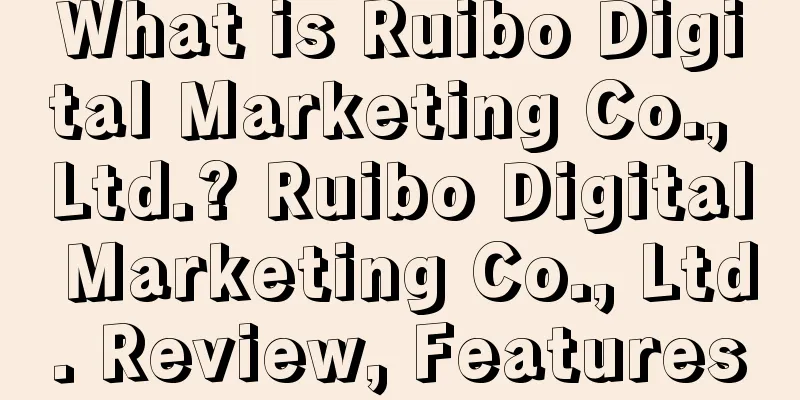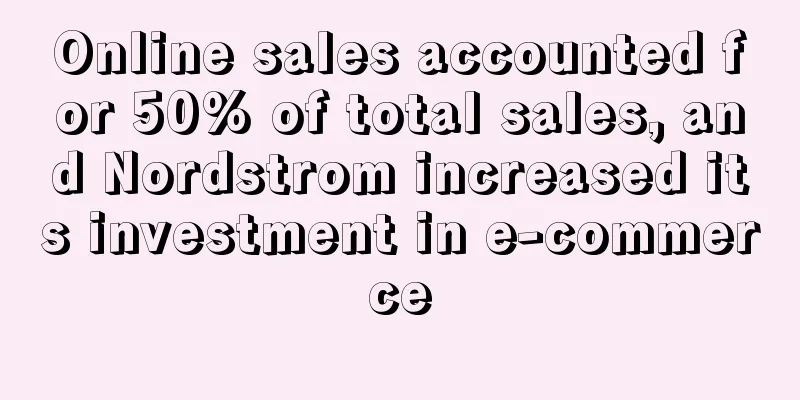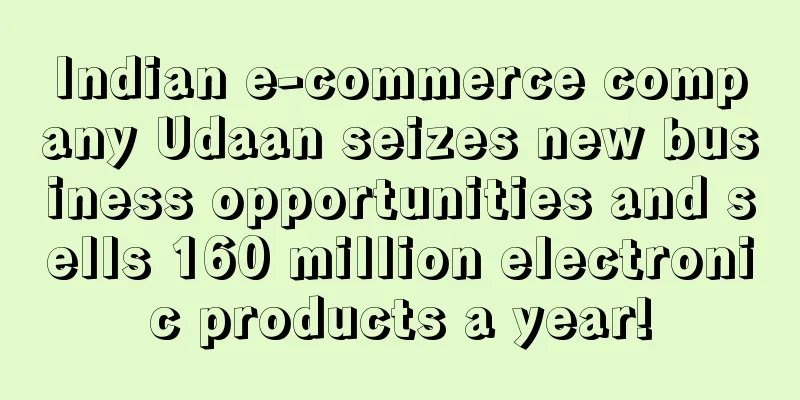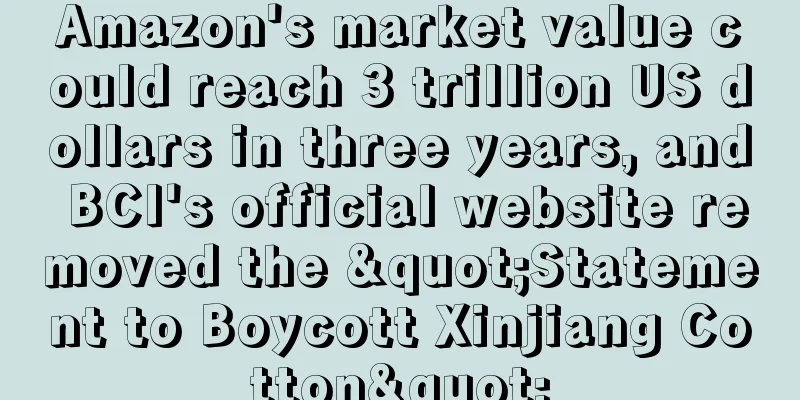Breaking into the top 5 Amazon sellers, these giants are on the rise!
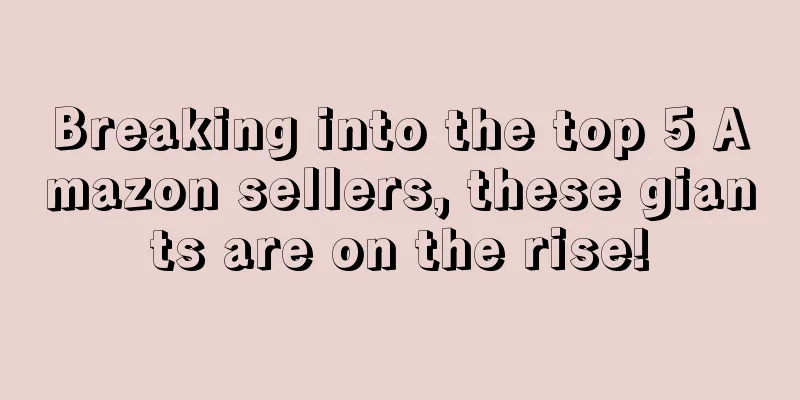
|
Business Insider , a well-known American blog media , reported that according to the latest list of Marketplace Pulse, if all the brands of Amazon brand aggregator Thrasio are added together, it will become the top five sellers on the Amazon market.
If people in the cross-border e-commerce industry were asked to use one word to describe the Amazon brand acquisition market in 2021, it would be "lively". After many aggregators received huge financing, they immediately rushed to China, which they believed had the greatest acquisition potential and was also the fastest growing region for third-party sellers. At this point, the majority of Chinese sellers recognized a new model: Amazon Aggregator.
One year later, the industry has also experienced the following process: from suspicion to half-belief and then to belief. Now Amazon sellers have also shown great interest in this model with an "exit mechanism", and are seriously considering that if they don't want to do it anymore, they may sell their brands/stores to aggregators. Coupled with the psychological trauma caused by the suspension of accounts on sellers, it is natural for aggregators to acquire Amazon brands/stores.
One party has a lot of money, and the other party is willing to sell. The deal seems to be easy. However, after learning from various sources, Ennet found that the number of projects completed by aggregators in the Chinese market in 2021 is not as many as everyone imagined, at least not proportional to the hot market. Is there something wrong with this business model? Or are the brands/stores of Chinese sellers not ideal?
Moreover, since the emergence of this model, questions such as these have been lingering in people’s minds: Can aggregators rely on this model to create the next Anker Innovation? Where will this business model go in the future? …
The market is busy, but the aggregators are calm
Not long ago, Amazon aggregator D1 Brands acquired a UK-based kitchenware brand with sales of $50 million. This is one of the 14 brands that D1 Brands successfully acquired from April to December last year. The brand was launched in 2019 and manages 20 SKUs in the Amazon ecosystem with annual sales of more than $50 million.
In Europe and the United States, such acquisition cases are not uncommon, and the market is booming. In China, this market is also very lively. In 2021, I believe that many sellers have received invitations from aggregators through in-site letters, emails, text messages, phone calls and other channels. At the same time, more aggregators have announced that their main target market is China after obtaining financing, and local Chinese aggregators have also emerged. After experiencing the Amazon account suspension wave, many sellers shouted: "I don’t want to struggle anymore, buy me!" And sellers who successfully sold their brands also lamented: "No longer have to worry about search rankings, warehouse costs, negative reviews and counterfeiters."
From any perspective, it will lead to a rapid increase in transaction volume. However, from the perspective of various aspects of E-net, in the past year, the number of acquisitions completed by aggregators in the Chinese market is not very large. For example, FBAFliper, a brokerage company (agent) that specializes in assisting sellers in selling brands/stores, has only completed 20 projects, and Nebula Brands, a local Chinese aggregator, has only completed 6 projects. (Note: There will be overlaps in the projects completed by brokerage companies and aggregators.)
As a local aggregator, Nebula Brands has a natural advantage. "Building trust with Chinese sellers, and asking them to open up their data, cooperate with us in a lot of investigations, and negotiate prices, there is a lot of localized trust involved." Nebula Brands co-founder Wang Yanzhi told Ennet that they have a clear advantage when looking for projects.
But even so, Nebula Brands only completed six projects in 2021 .
Speaking of the reasons, Henry, general manager of Berlin Brands Group ( BBG) China, admitted that there are three main aspects: First, the number of projects that truly meet the acquisition standards is very limited, and the compliance level of Chinese sellers themselves increases the difficulty of acquisition; second, the acquisition of Amazon brand/store market by aggregators in 2021 is an extremely basic year. In this emerging market, both sellers and aggregators are in the learning and exploration stage and are not ready; third, the nature of the acquisition business determines that it is not a large-scale thing. As an investment industry itself, it is not in a state of blooming everywhere, but has a very high elimination rate.
Some data from FBAFlipper also indirectly confirms Henry's point of view. In 2021, among a large number of projects, FBAFlipper screened out 140 projects in the early stage, and eliminated half of them after the financial reports and statements were completed. Then, of the remaining 70 projects, only 30 could actually be put on the market, and only 19 could complete the transaction in the end.
" Looking at 100 projects, often only 1 will meet the initial screening requirements, and the number of domestic aggregators doing their own business will not exceed 5%." As for the reason for such a low standard, Neo, the head of FBAFlipper, expressed a similar view to Henry, "From a global perspective, the project completion rate in the Chinese market is relatively low, mainly because most Chinese sellers are doing a lot of miscellaneous things, many of which are grocery stores, which do not meet the requirements. On this basis, we screen out the projects that we are interested in selling and do data integration. At the same time, these projects have not been operated with black technology and have not been punished by Amazon. There are really not many of them."
In addition, in this business model, finding good projects is still a very important prerequisite, because if the quality of the acquired brands /stores is not ideal, the aggregator will not only have to spend a lot of effort to operate them in the later stage, but may also consume a lot of manpower and material resources, but still not be able to show its grand plan, and lose both the wife and the army. "It seems that we have bought a lot of brands to operate them, but in fact our business model is still very different from that of sellers. Sellers earn money from selling goods, and we earn the brand premium after the assets we bought are operated and managed." Wang Yanzhi also explained this.
However, even so, many aggregators will still regard the Chinese market as their main target in the future. Olsam, which quickly entered the Chinese market after the previous financing, is very determined: "China is a huge market for us, with more than 200,000 active private label sellers, and is one of our strategic growth priorities in 2022. We plan to comprehensively deepen our business in China and accelerate acquisition progress."
Amazon gives the green light, and the integration flywheel starts
At present, there are two main purposes for aggregators to acquire different brands: one is to acquire different assets and seek listing and realization; the other is to make money by selling goods. Whether the next Anker Innovation will be produced in this process is still unknown, but one thing is certain, that is, the integration on Amazon is gradually intensifying. At the same time, these aggregators that bring together a large number of brands are slowly occupying the top position in the Amazon seller rankings.
Business Insider , a well-known American blog media , reported that according to the latest list of Marketplace Pulse, if all the brands of Thrasio, the leading brand of Amazon brand aggregator, are added together, it will become the top five sellers in the Amazon market.
Thrasio estimates that 1 in 6 American households has purchased Thrasio products through Amazon. Currently, Thrasio has acquired more than 200 brands and raised more than $3.4 billion in funding. After completing the latest round of financing, Thrasio's valuation has reached $6 billion , and this is not the end of Thrasio . Not long ago, it rushed to India, another fastest-growing region in Amazon's third-party market, trying to " smash open" the door to the Indian market with $500 million .
There are many followers who regard Thrasio as their target. According to Marketplace data, there are currently 89 active aggregators, 46 of which have announced financing rounds, and 29 of which have raised at least $100 million. From January 2020 to date, Amazon brand aggregators have received more than $130 in financing. The top five aggregators are Thrasio, Berlin Brands Group, Perch, Heyday and SellerX, which have raised more than $7 billion.
Amazon also expressed support for this integration and gave it the green light. Neo was once an Amazon seller. In 2020, he sold his two brands, kitchenware and travel, to an Israeli aggregator. When he sold the project, the information he needed to submit was very complicated, but soon after, Amazon Europe launched the Transfer Account function. Through this button, sellers only need to submit some simple information to complete it. "By 2021, the information that needs to be submitted will be even simpler. The corresponding review may be completed within 1-2 days. Account transfers in the United States do not even require review."
However, the operational capabilities of aggregators vary. Some aggregators have large operational teams and can operate brands well in the later stages, while others do not have the ability to optimize operations in the later stages. In this case, further integration will occur. Aggregators that operate poorly will sell projects to other aggregators.
This whole process is also a business drama that often happens in the consumer goods market: big fish eat small fish, small fish eat shrimps.
Neo believes that there will be a consolidation process in 2022. "There are actually some signs now. Most aggregators can maintain their balance after buying projects. Some have even achieved several times growth, but there are also 10% to 20% of projects that have declined."
However, this does not mean that the business model of aggregators acquiring Amazon brands will disappear in 2022. In the long run, as long as there is room for small brands to integrate and add value, this model will continue to reciprocate. As Wang Yanzhi said, when this model disappears, it means that Amazon as a platform will disappear, or the platform will be full of big players and there will be no small sellers to integrate.
Therefore, many aggregators expect that as this model continues to mature in 2022, new aggregators will continue to enter the market. However, there is a situation where if the leading aggregator Thrasio fails to successfully go public, capital will be reserved about this business model and will be more cautious about investment. In this case, large-scale acquisitions by aggregators will also slow down.
In fact, whether or not a company will be “eaten up” is a test of the aggregator’s asset management capabilities in the later stages. Wang Yanzhi said frankly: “The core of brand management is the efficiency of managing brand assets. If the efficiency is better than that of other management parties, there will be more money to acquire other brands later.”
Some people believe that aggregators that raised funds after 2021 have lost the first opportunity and will not have many opportunities later. Wang Yanzhi disagrees with this view. "The current situation is uncertain. Whether aggregators can develop steadily depends on whether the funds can be better raised and whether they can operate efficiently after acquisition. As long as you can prove that your operation efficiency is high and the collection is accurate, then the subsequent continuous fundraising and expansion are visible to the naked eye. It does not exist that whoever runs ahead wins. If you run ahead but do a lot of bad projects, then the degree of debt is extremely terrifying."
Some people may wonder, since there will be more aggregators entering the market in the future and competition among aggregators will intensify, will the acquisition price also be raised?
In the fourth quarter of last year, there were reports that the purchase price had risen to 6 times the annual gross profit , and there were even reports of 8 times the annual gross profit. Many people believe that with the intensified competition, the purchase price will rise. According to the information obtained by Een.com from several aggregators, this situation is unlikely to occur. It is understood that if the purchase price exceeds 6 times the annual gross profit , it will be difficult for aggregators to recover the cost in the later stage. At present, their purchase price is mostly 3~4 times. Once it exceeds 5 times, it needs special approval from the investment committee composed of financing institutions. Although aggregators hold a large amount of funds, each investment needs to be approved by the investment committee.
In the second half of the product and supply chain-oriented era, aggregators are not ready
We know that the acquisition targets of aggregators are mostly brands/stores with a scale of 200-300 million, because Amazon's capital cycle is very long, and sellers of this scale have reached the ceiling if they do not rely on the power of capital to break through. However, this scale is considered by traditional equity investment institutions to be a high-risk, complex asset, and far from the assetization cycle, and is not a good project.
"We, as traditional equity investment institutions, invest in sellers. What we buy is the equity of the company, the entire account. Figuratively speaking, it includes bones, pork, pig tails, etc. There is no chance to pick and choose. Good assets and bad assets will exist at the same time, so we invest cautiously." Wu Di, executive director of Hongzhang Capital, who has been paying close attention to the cross-border e-commerce industry for a long time and has invested in many overseas-related companies , also said.
This will create a pain point for sellers: at this size, it is difficult for capital to favor them, but they do not have enough funds to continue developing themselves.
This is the background for aggregators to enter the market and select high-quality brands /stores.
From the current perspective, after most aggregators acquire an Amazon brand /store, they usually focus on front-end operations such as brand packaging, advertising optimization, and logistics optimization. However, after the large-scale account blocking incidents in 2021, it can be clearly felt that the weight of the front-end system is getting lower and lower, and Chinese sellers are gradually returning to a product and supply chain-oriented development approach.
" Amazon's first half was all about operations, so many big sellers relied on operations to come out on top. Now aggregators acquire brands/stores with operational gaps and improve operations themselves. This idea was effective in the first half, but unfortunately, Amazon has now passed the big bonus stage. " Wu Di admitted.
In his opinion, there is no logical problem with the business model of aggregators acquiring Amazon brands /stores, but the key is to figure out where the improvement points after the acquisition are. "In the past, we could rely purely on efficiency improvement, but today it is obviously not the case."
Wu Di believes that in the second half, aggregators should focus on improving the acquired brands /stores in four aspects: R&D system, product system, supply chain management system and talent organization system. “This is more on the back end, but after a round of contact, I found that domestic aggregators have not yet formed these accumulations. ”
Most aggregators do not have an Amazon operating background. They are more likely to learn from Trasio's route and do this in line with the United States. However, the pure acquisition of brands/links is not very meaningful. What is important is to tie in the original R&D team, supplier relationships, and product development iteration ideas. "Now many aggregators have not figured this out, but some aggregators are transitioning in this direction. For example, when signing an acquisition agreement, some aggregators will require the founders of the acquired brands/stores to stay and help incubate for a period of time and continue to maintain product development and supplier systems. " Wu Di said.
Since Anker Innovations was listed on the Shenzhen Stock Exchange's ChiNext in August 2020 and became the "first cross-border e-commerce stock", "recreating the next Anker Innovations" has become the goal of many investors, but we all know that Anker Innovations' real strength lies in its back-end strength.
Therefore, compared with aggregators, companies like Anker Innovations have the best chance of doing this. Those who have paid attention to Anker Innovations' actions in recent years can also know that it has indeed done so.
In April last year , Anker Innovations invested 40 million yuan to invest in Zhiyan Technology, a high-tech company specializing in the research and development of smart home products and upstream and downstream supply chain optimization. At the end of the year, it purchased a 5.0635% stake in Lingling Wuxian, a company specializing in the research and development of drones, for 32 million yuan to further expand new product directions and track technological development in new product areas.
This is equivalent to using space to exchange time. Anker Innovations has a complete R&D system and supplier management mechanism . As long as these categories are grafted onto its R&D and manufacturing system, effective quantitative changes can be generated . The most direct way is to shorten the development cycle, broaden the development ideas, and enhance the development depth. The second is to include it in the centralized procurement system. Relying on Anker Innovations' system, the original core components including chips, motors, etc., relying on the original Anker system, can directly help you change the supply chain level from B to A.
From the perspective of empowerment after the acquisition, for traditional product-based companies, this will give the acquired brands /stores stronger comprehensive modular capabilities.
In fact, in recent years, big sellers that previously relied on operational means to break out have been trying to take this path. According to an investor close to a Shenzhen big seller, the big seller had previously introduced a group of people from a well-known corporate ecosystem, organized external forces, and provided a start-up fund to do this.
Judging from the projects invested by traditional equity investment institutions, they are also gradually moving closer to such companies. For example, Hongzhang Capital's investment ideas for going overseas have gradually iterated and turned to companies with supply chain foundations, product capability portraits and potential, such as Youpai, Deerma, and Douhe. The common characteristics of this type of company are that the bottom layer is the supply chain, that is, they have their own internal production capacity to provide ODM business; the middle is channel going overseas, weak brands multi-channel trade or retail, including what we often call cross-border e-commerce sectors; the top layer is brand going overseas, acting as an agent or even acquiring international brands, changing supply, improving operations, optimizing organization, learning from the barbarians to defeat the barbarians, and finally forming a business matrix of manufacturing + channels + brands. Manufacturing is safe at the bottom, channels can produce scale and volume, brands can produce value, and they can attack or defend, but they also have higher requirements for the founding team's product genes, operational level, international vision, resource acquisition, organizational capabilities and other comprehensive qualities.
“The current business model of aggregators is actually a matter of odds. Funds that invest in early stages are willing to bet on the odds, while mid- and late-stage capital is more cautious. Before this model is verified, we will most likely not make a move,” Wu Di told Ennet. Amazon Aggregator Thrasio Amazon Aggregator |
<<: Helping sellers restore their accounts, key figures in Amazon bribery case arrested
>>: Another brand failed! Hundreds of products were recalled
Recommend
What is Intmall? Intmall Review, Features
Fengmai.com is a cross-border export e-commerce pl...
Another BUG? A 15-year-old Amazon seller suddenly cannot upload products
Recently, some sellers said that they were sudden...
European online grocery platform Everli accelerates international expansion with $100 million in funding
According to foreign media reports, European onli...
Amazon UK will provide apprenticeship training funds for sellers, TikTok live broadcast launches five new features
Amazon UK to provide apprenticeship training fund...
Take it off the shelves! The popular game turned out to be the source of copyright infringement, and the seller has been sued
Infringement incidents have occurred frequently r...
What is FabKids? FabKids Review, Features
FabKids is a subscription-based sales platform fo...
Attention European sellers! New Amazon advertising features are launched
With the launch of Amazon multi-market campaign c...
What is e-Vendo? e-Vendo Review, Features
e-Vendo is an omnichannel cloud platform that pro...
What is IFEI RUITE? IFEI RUITE Review, Features
Yifeiruite (Yifiruite E-Commerce Beijing Co., Ltd....
Annual revenue exceeded 1.3 billion, but the net profit of the big seller dropped by more than 80%
Recently, driven by "Fitness Coach Liu Gengh...
What is Youth To The People? Youth To The People Review, Features
Founded in 2015, Youth To The People is an Americ...
German sporting goods sales are expected to reach nearly 7.5 billion euros in 2028
As we all know, Germans are keen on sports . Acco...
Increased revenue by nearly 70 million in one year! E-commerce companies easily unlocked the second growth curve
Statistics show that in the past five years, the ...
What is escents-us? escents-us Review, Features
escents-us is an online website focusing on essent...
Quality scandal! 8,800 products of Chinese Amazon sellers were recalled
Recently, an announcement released by the US Cons...
